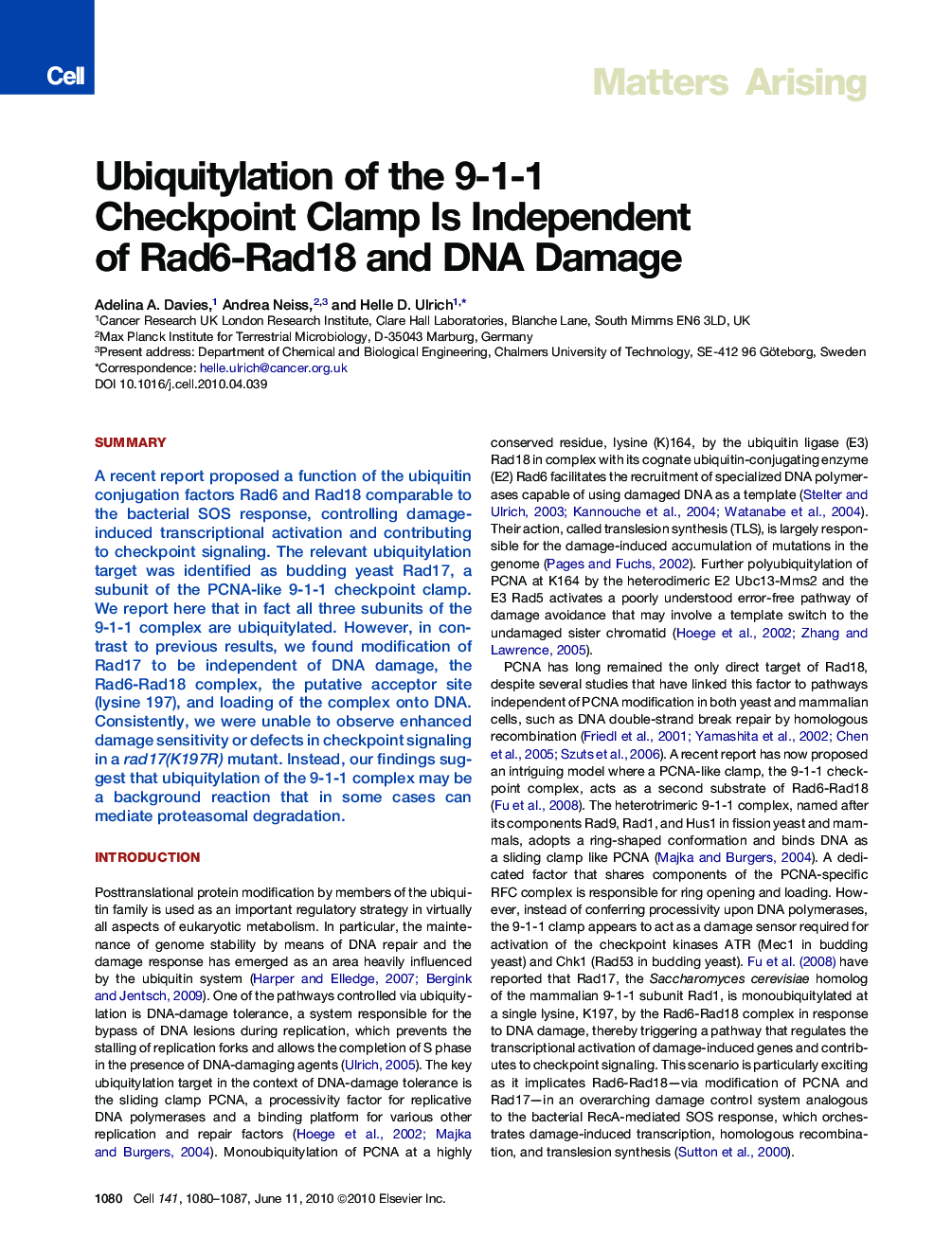| کد مقاله | کد نشریه | سال انتشار | مقاله انگلیسی | نسخه تمام متن |
|---|---|---|---|---|
| 2036355 | 1072258 | 2010 | 8 صفحه PDF | دانلود رایگان |

SummaryA recent report proposed a function of the ubiquitin conjugation factors Rad6 and Rad18 comparable to the bacterial SOS response, controlling damage-induced transcriptional activation and contributing to checkpoint signaling. The relevant ubiquitylation target was identified as budding yeast Rad17, a subunit of the PCNA-like 9-1-1 checkpoint clamp. We report here that in fact all three subunits of the 9-1-1 complex are ubiquitylated. However, in contrast to previous results, we found modification of Rad17 to be independent of DNA damage, the Rad6-Rad18 complex, the putative acceptor site (lysine 197), and loading of the complex onto DNA. Consistently, we were unable to observe enhanced damage sensitivity or defects in checkpoint signaling in a rad17(K197R) mutant. Instead, our findings suggest that ubiquitylation of the 9-1-1 complex may be a background reaction that in some cases can mediate proteasomal degradation.
► 9-1-1 clamp ubiquitylation and the DNA-damage response are mutually independent
► Ubiquitylation of the 9-1-1 subunit Rad17 is independent of lysine 197, Rad6, and Rad18
► Lysine 197 does not contribute to Rad17 function in checkpoint activation
► Rad17 ubiquitylation can cause proteasomal degradation of Rad17
Journal: - Volume 141, Issue 6, 11 June 2010, Pages 1080–1087